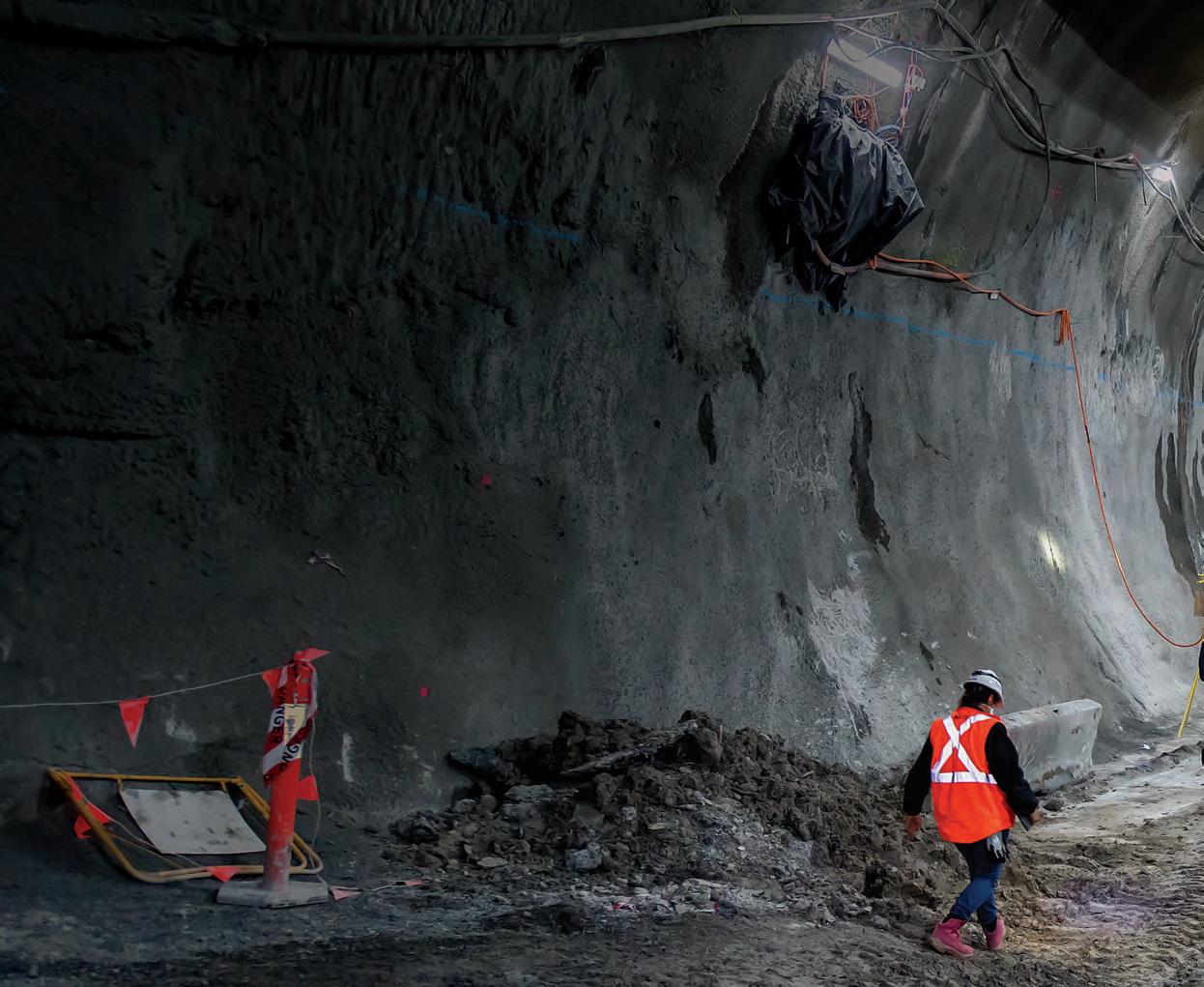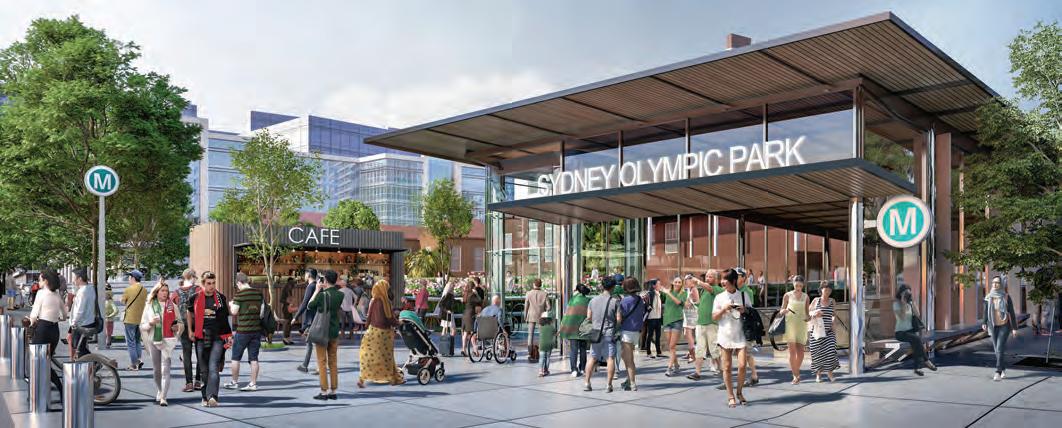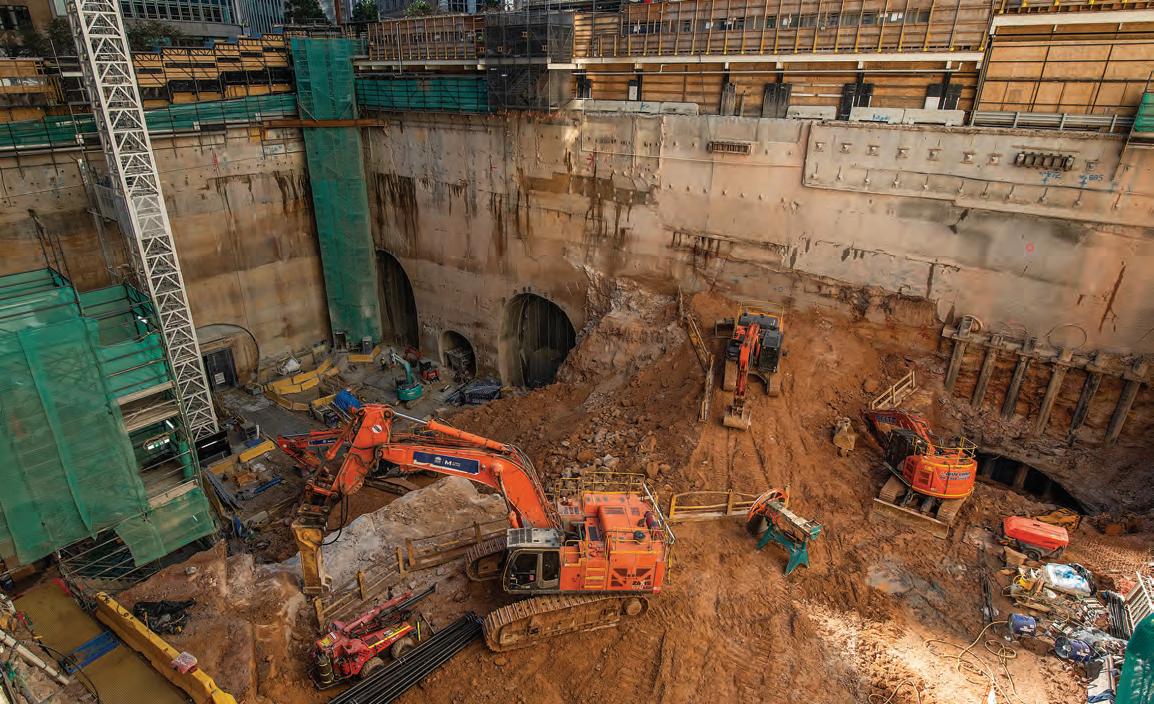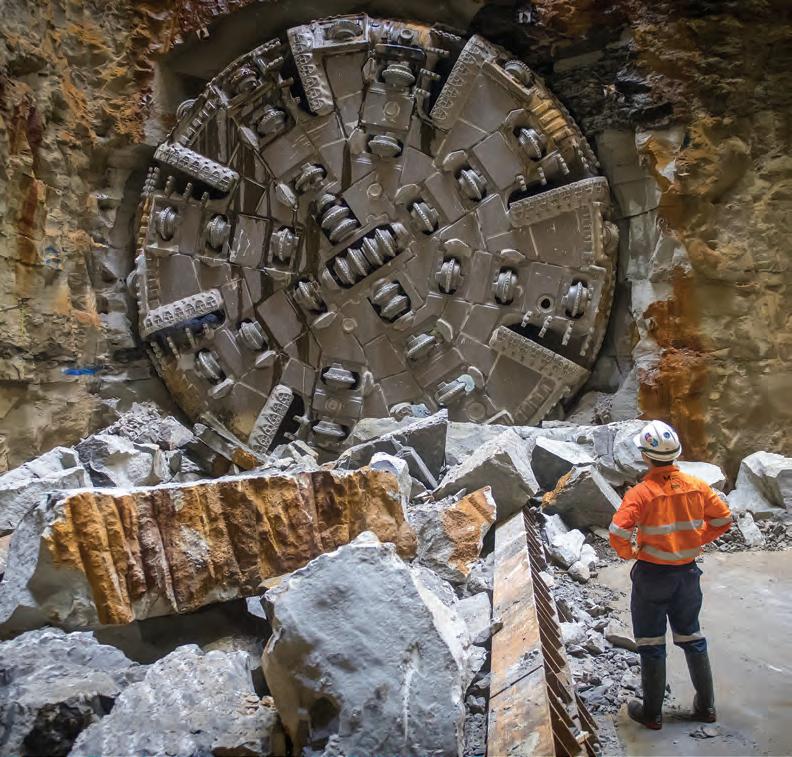
9 minute read
Sydney Metro
THE MAKING OF THE METRO
SYDNEY METRO IS THE LARGEST PUBLIC TRANSPORT INFRASTRUCTURE PROJECT IN AUSTRALIA. IT INCLUDES FOUR SEPARATE TRAIN LINES, TUNNELS UNDER SYDNEY HARBOUR AND, BY 2024, 31 STATIONS. WE CATCH UP WITH SYDNEY METRO CEO JON LAMONTE TO SEE WHERE THE PROJECT IS AT AND WHAT IS STILL TO COME.
NSW Government population projections suggest Greater Sydney’s population will grow to approximately 6.6 million in 2036, which is more people than the current population of Singapore.
With 5.7 million people, Singapore is hailed as one of the best cities for public transport in the world. The Mass Rapid Transit system buses and subways make it simple for people to move around the city. The same cannot be said about Sydney.
In 2012 the NSW Government announced Sydney Rail’s Future: Modernising Sydney’s Trains, which included plans for a North West Rail Link and a possible second harbour crossing.
This became a reality in 2014 when the State Government announced the second harbour crossing to join the Bankstown line.
On June 4, 2015 former NSW Premier Mike Baird and Minister for Transport and Infrastructure Andrew Constance announced the 66 kilometre high capacity rail line that would become the Sydney Metro Project.
The plan was to build the Sydney Metro Northwest, comprising of 36 kilometres of rail and the Sydney Metro City & Southwest with 30 kilometres of metro line, passing under Sydney Harbour.
Fast forward to 2019 and Sydney Metro’s first line, Metro North West was opened on May 26, with 13 metro stations and trains every four minutes in the peak.
For 2020, major works are focused on the second line, Sydney Metro City & Southwest, due to open in 2024. This line will have seven new metro stations and 11 upgraded stations.
To expand what is Australia’s largest public transport project even further, 2020 has seen the progression of a new Sydney Metro West line and the Western Sydney Airport line.
At the helm of this breadth of infrastructure works is Dr. Jon Lamonte, CEO of Sydney Metro. Roads & Infrastructure sat down with him to get an update on project works and his hopes for how the rail will transform Greater Sydney.
CONSTRUCTION PROGRESS With the Metro North West completed eyes are now on the City & Southwest line for completion in four years’ time.
Jon Lamonte says with tunnelling now finished for the City & Southwest line, crews have been busy laying an invert slab as the concrete base for the rail track.
“The next big section of course is to lay the new tracks. It aids the logistics of getting things in and out of site and is the next stage to making us a real railway,” Lamonte says.
He says alongside this there will be work undertaken to create the power supplies, substations, high voltage and low voltage cables and other related infrastructure. Systems Connect, a partnership between CPB Contractors and UGL will deliver these line-wide works.

Image credit: Sydney Metro
“We are also busy out at Tallawong, where the depot is and that’s going to be our critical stabling facility which we need to expand for City & Southwest,” Lamonte adds.
Like many other projects in 2020 Sydney Metro has adapted to COVID-19
Image credit: Sydney Metro restrictions and site requirements.
“The government said to us that they want us to keep going and we have absolutely kept going on construction sites everywhere,” Lamonte says.
“I have been on sites where we’ve had

Workers at the Pitt Street North cavern.
toolbox meetings with everyone carefully distanced, standing on dots 2.5 metres apart. Central Station, for example, has markers with how far apart you must be as you go onto site. We also ensured extra masks were available to make sure those sites
Image credit: Sydney Metro

The North Site at the future Martin Place Station.
can keep going.”
Lamonte says there have even been some accelerations in works due to lower levels of patronage across the transport network.
“At Central Station with less people on trains we have taken a little bit more of the station to build the northern concourse faster. We have been able, with help from Sydney Trains, to use construction hours more effectively, so some things we might have done at night we’ve done in the day just to get things done a little faster,” he says.
Even reduced traffic on the roads enabled the project team to work with the City of Sydney Council to allow more trucks to flow through and deliver material to sites.
“Wherever we can we have accelerated works and that is good because this is the way we are going to drive the economic recovery for Sydney and Australia, by keeping these jobs and keeping projects going,” Lamonte says.
“We have been talking about supply chain and where materials are coming from, but we’ve kept a good relationship with industry. We’ve kept everything going.”
FUTURE METRO WEST The Greater Sydney Commission champion the idea of Sydney being split into three major city precincts. These are the Western Parkland City, Central River City and the Eastern Harbour City.
Ultimately over the next few decades the goal is to create these three cities where most residents live within 30 minutes of their jobs, education and important facilities.
Lamonte says Sydney Metro West provides a major artery for the Central River City right through to Parramatta.
With Expressions of Interest (EOIs) now out for tunnelling contracts on Metro West the project is expected to get underway next year.
“It will double the rail capacity of that corridor and for the first time places like Burwood North and The Bays are going to have access to rail,” he says.
To begin, 50 kilometres of tunnelling will be required for the Metro West, which will be the next stage to link up the metro train lines.
“We released the Environmental Impact Statement (EIS) recently, in COVID times it’s hard to get community feedback using traditional engagement methods so we really had to think carefully about how best to do that,” Lamonte says.
“We talked to community about how to do that in a digital way which is a first for us, and really get feedback in a different way from what we would normally. The huge number of views of our online portal we had just tells us how many people want to be involved. Community engagement is so important for us on these projects.”
The Expressions of Interest (EOIs) are now released for tunnelling in two stages. The first from Westmead to Sydney Olympic Park and the second from the Park to The Bays.
“That was designed so we could offer packages to different players in the market and give opportunities to more firms,” Lamonte says.
“We have quality bids coming in for the EOIs and will follow the normal process to take them to Request For Tender (RFT) stage and then award next year.”
THE NEW WESTERN SYDNEY AIRPORT LINE In June 2020 it was announced that the Federal and NSW Governments had jointly committed a further $3.5 billion to the Western Sydney Airport Rail line, which will in total be an $11 billion project.
The first step to kick off this section
of the metro will be to get a tunnelling package drawn up.
Set to open at the same time as Western Sydney Airport opens for passenger services, 2026, the window for construction is tight.
“This is a more complicated project than usual because it is part funded by Federal and State governments, so that is one level of complexity,” Lamonte says.
The second level of complexity he says is working with the Western Sydney Airport Company and the Western Sydney Aerotropolis Authority to manage expectations of all three parties.
“We’ve got a lot of detailed conversations - between us we have steering groups, working groups and technical groups with the airport right now. We want to understand what their plan is and what their design is looking like for the terminal that we are going to serve.”
The Sydney Metro team will have a rail infrastructure deed to map out for this line, but despite complexities the relationship the team has with the airport is strong.
“We have been working with the airport for some time because if you go into the tunnels in central Sydney where has the spoil gone? It’s gone out to Western Sydney Airport to provide some of the base for their runways,” Lamonte says.
“We are looking at the efficiencies on this, where can we work together on utilities and where can we work together on other supply side issues. There are huge opportunities to work closely together and we have got the framework to do that.”
OPPORTUNITIES Repurposing spoil from the tunnels is one of a plethora of sustainability objectives and practices put into place across all sections of the Sydney Metro project.
“Social procurement and sustainability are really key for us. In sustainability terms we are proud of our credentials and the fact that we have 100 per cent offsets for power requirements for Metro North West and we will also have the same for City & Southwest,” Lamonte says.
Skills development and apprenticeships are another important component of future Sydney Metro projects such as the Western Sydney Airport line where the team is looking to take on around 250 apprenticeships.
“Increasing Aboriginal participation in our workforce and supply chain is really important to Sydney Metro, we have done a lot of work with local community groups and our delivery partners to make sure that we create opportunities as well as setting requirements in our contracts to drive these,” Lamonte says.
The projects also focus on supporting skills development to address critical skills shortages and emerging technologies within the industry.
Sydney Metro sees health and safety as one of its critical responsibilities but also the opportunity to be an industry leader.
Tunnel Boring Machine Kathleen breaking through at Blues Point.
Image credit: Sydney Metro
“Wherever we can raise the bar for health and safety we do. We want the highest standards for health and safety for all the people working with us,” Lamonte says.
“When tunnelling through sandstone in Sydney, cutting it with a roadheader or anything else you can release silica dust. There is a real drive in Sydney Metro to focus on that to make sure we have the right controls in place to prevent silicosis because it’s an awful killer,” he says.
Not only does Sydney Metro work towards providing sustainable, social and safety outcomes but the project team is working hard to improve the communities their stations and rail will serve.
“One of the reasons that Sydney Metro was set up as a separate entity was about the precinct responsibilities that we have got. We are not just building the railway we are very much about transforming the space through place-making and doing the right thing for the community,” Lamonte says.
He says Waterloo Station and the surrounding precinct is a really good example of this.
“We are looking at a mix of social and

affordable housing there and we are looking at preserving important parts of the precinct such as a heritage church,” Lamonte says.
“It’s probably a great example I would say of metro really making a difference to the community and doing something fundamental for people who otherwise wouldn’t have had that opportunity.”
As works on the Sydney Metro progress, it is fair to say these works will go a long way towards giving connected cities such as Singapore or London a run for their money.










